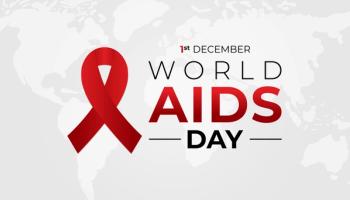
Health help 4 u: Mobile telephone technologies come of age
Because so many people nowadays seem to be using cell phones rather than computers and e-mail to stay in touch, telemedicine programs are taking note of this trend and beginning to rely more on mobile phone technology.
Key Points
Sometimes it seems as if mobile devices have invaded the universe. At every turn, someone can be seen attached to a Bluetooth and chatting away, or peering intently at a cell phone or Blackberry to check e-mails or send text messages. Still others are similarly "plugged in," listening to music or even watching movies. With more than 3.3 billion mobile phone subscriptions worldwide, this technology has permeated even such distant reaches of the world as Central America, India, Botswana, Malawi, and South Africa.1
MOBILE PHONE DIAGNOSTICS
Because so many people nowadays seem to be using cell phones rather than computers and e-mail to stay in touch, telemedicine programs are taking note of this trend and beginning to rely more on mobile phone technology.
With ClickDiagnostics, healthcare providers record patient images and interviews by cell phone, using specialized, downloaded software that sends the information to a central server connected to a web interface. Doctors and specialists can log onto the web interface and remotely conduct a patient evaluation.
Another mobile phone application, AirStrip OB, can be used with PDAs or smartphones to monitor real-time fetal heart rates, patterns of maternal contractions, and other aspects of obstetric care.
Bioengineering researchers have gone a step further in an effort to bring medical imaging to the estimated 75% of the world population that lacks access to it.3 Researchers found that with a simple data-collection device at a patient site and advanced image reconstruction at a central site, a mobile phone screen could be used to remotely view and evaluate tomography scans (eg, breast cancer tumors). A system such as this may make the purchase of expensive imaging equipment unnecessary.
MEDICATION ADHERENCE
Mobile technology that may improve patient adherence to treatment regimens is also being developed, beginning in the area of tuberculosis (TB) medication monitoring.
Side effects and lengthy treatment periods can make TB treatments difficult for patients to manage. The World Health Organization (WHO) has helped improve global medication adherence through its Stop TB Strategy program, which emphasizes directly observed, short-course treatment.4 However, for complex and difficult-to-tolerate regimens, new technology is enabling the development of strategies to encourage patients' adherence.
For example, some specialists in technology and disease control are looking into the use of text messages, as well as systems based on text messages or short message service (SMS). One application is the X Out TB program from the Massachusetts Institute of Technology (MIT).
The program was born during a student competition focused on solving international development problems. Medication adherence among patients with TB was identified as one of the global problems that the students could seek to improve.6 Accordingly, they built into the program incentives designed to improve medication adherence.1,5
Piloted in Nicaragua, the X Out TB program provided patients taking TB medications with paper diagnostic strips that generate a code upon detection of isoniazid metabolites in the urine. Using SMS, each patient sends the codes to the program, which saves them on a server. At the end of the month, on the basis of correct codes sent, the patient is rewarded (eg, with mobile phone minutes).
Jose Gomez-Marquez, director of the Innovations in International Health program at MIT, says, "The technology has a lot of room for growth, including other disease states where compliance/adherence is an issue. It could be applied in developed and underdeveloped countries to improve patient outcomes for diseases such as HIV, diabetes, and psychiatric disorders."
Acknowledging that the issue is not a simple one, he added, "There are many moving parts to patient adherence; therefore, in order to address the back-to-back challenges of the problem, we used a multidisciplinary approach that brings together behavioral economics, chemistry, medicine, pharmacy, epidemiology, and telecommunications."
A clinical trial is using this technology in Pakistan, where the incidence of TB is exceedingly high, as is the incidence of multidrug-resistant TB.6
A pilot program introduced in South Africa, the SIMmed program developed by CompuTainer, asks patients to press the speed-dial button on their mobile phones after taking their medication. The number dials into a server that records the medication event; if the patient does not call, the program sends a reminder to the patient by SMS or contacts a caregiver.7
The TB medication adherence rate in Western Cape, South Africa, increased from approximately 40% to more than 90% with the use of these SMS reminders, which were originated through a challenge competition at the Royal Institute of Technology, Stockholm.7,8 CompuTainer is working with the South African government to expand the program to reach more of the population.
SMOKING CESSATION
In 2008, to support smoking cessation goals, the Department of Public Health in Mohave County, Arizona, initiated the Stop Smoking Over Mobile Phone (STOMP) program from Healthphone Solutions.9 STOMP sends smokers who are trying to quit a series of personalized text messages over a 26-week period. The text messages, which offer some interactive features, are based on a clinically developed program that has demonstrated medical efficacy.
Smoking-deterrent text messages received throughout the day may encourage more successful outcomes for program participants who are tempted to reach for a cigarette. Messages use different intervention approaches, including tips on quitting, support through the process of quitting, facts about smoking, and interactive multiple-choice polls.
In addition, participants can send text messages to the service when they feel the urge to smoke, after they have accidentally smoked a cigarette, or when they have relapsed, and the service will provide support.
STOMP is also being piloted in a diversionary effort to reach young smokers and high school students caught smoking, a demographic group thought likely to be more receptive to a program based on text messages than it would be to more conventional approaches.
In New Zealand, in a randomized, controlled trial including more than 1,700 STOMP users, the clinical trials research unit at the University of Auckland was able to double cigarette smokers' self-reported quit rates from 13% to 28% after 6 weeks.10
HEALTH PROMOTION
Health-promotion programs are increasingly embracing mobile messaging. In Britain, women have received text-message reminders to take their birth-control pills.11 In Connecticut, Intelecare Compliance Solutions offers services that notify individuals by text, e-mail, or voice-mail messages when to take their medications, when to refill prescriptions, when to make medical appointments, and when to check vital signs. Intelecare markets its services to both employer groups and individuals. The direct cost to consumers is approximately $60 per year.
Text messages are also helping some Australian patients with AIDS with medication adherence.12 And in San Francisco, the city's health department is using a messaging system in its SexInfoSF program; through mobile phones, it provides young people with information on sexually transmitted diseases, pregnancy, and how to obtain free medical testing.13
Dr Kaufman is president of PRN Communications, Inc, a consulting/medical writing and editing firm.
REFERENCES
1. Barclay E. Text messages could hasten tuberculosis drug compliance. Lancet. 2009;373:15–16.
2. Moore J. Lives of a cell. Government Health IT. 2008;Oct:19–21.
3. Granot Y, Ivorra A, Rubinsky B. A new concept for medical imaging centered on cellular phone technology. PLoS ONE. 2008;4:e2075.
4. World Health Organization. The StopTB Strategy.
5. Ramey C. X out TB: Mobile phones for combatting tuberculosis. MobileActive.org.
6. World Health Organization. Global tuberculosis control: Surveillance, planning, financing: WHO report 2008.
7. Singer E. Take TB meds, get mobile minutes. Technology Review. Published January 12, 2009.
8. Stockholm Challenge. SIMmed chronic medication compliance technology.
9. Nextgen stop smoking via text message service launched. Medical News Today. Published July 24, 2008.
10. Rodgers A, Corbett T, Bramley D, et al. Do u smoke after txt? Results of a randomised trial of smoking cessation using mobile phone text messaging. Tob Control. 2005;14:255–261.
11. Text messages offer health tips, reminders. Medical News Today. Published November 21, 2007.
12. Goldstein J. Health info in a text message. The Wall Street Journal health blog. Published November 20, 2007.
13. SexInfoSF.org.
Newsletter
Get the latest industry news, event updates, and more from Managed healthcare Executive.






















































